Tom's Hardware Verdict
The Sony PlayStation 5 is a powerful game console with an incredible controller and tons of potential. But it makes some noise and has a divisive design that’s far too large for some conventional entertainment spaces.
Pros
- +
DualShock 5 controller offers sensory experience
- +
Extremely fast load times
- +
Backwards compatibility with PlayStation 4
- +
Launch library with strong exclusives
Cons
- -
Very large, divisive design
- -
Limited storage space
- -
Fan sometimes makes high-pitched noise
Why you can trust Tom's Hardware
The PlayStation 5 is huge. Not just in its actual size, which is almost comical by typical console perspective, but in terms of new technology bringing the console into the modern era with crisp graphics, fast refresh rates and a custom SSD that makes you wonder how you ever lived with a hard drive. It's taking steps toward the PC gaming realm, but with all of the PlayStation ecosystem features that PS4 owners loved last time around.
As the leader in the space (by sales, anyway), Sony has to keep up by delivering the best games in the best console experience. And while the 8-core/16-thread CPU and AMD RDNA 2-based GPU may be slightly behind the Xbox Series X in specs on paper, it has a stronger launch library, bolstered by exclusive games like Marvel's Spider-Man: Miles Morales and Sackboy: A Big Adventure, though some will also come to PlayStation 4 if you're not ready to upgrade yet.
But there's also innovation in unexpected places. The DualSense, Sony's new controller, has a ton of potential when it comes to storytelling and interactivity, as long as it can get developer support.
And of course, we tested the system to see just how games run. From day one, the PlayStation 5 looks like another system laser-focused on the best gaming experience in a console.
Editor's note: This review was originally published on November 6, 2020 with pre-launch access to the system. On November 12, 2020, the review was updated with more impressions on the UI as well as the PS5's media offerings.
Design of the PlayStation 5
Let's just say it plainly: The PlayStation 5 is huge. It's the biggest console in modern gaming, and not only that, it's attention grabbing and sure to be divisive.
The PS5 measures 15.4 x 4.1 x 10.2 inches (390 x 104 x 260 mm), and that's without the base, which you need whether you keep it vertical or horizontal. The Xbox Series X is 11.8 inches tall and has 5.9 x 5.9 inch-sides, making it seem relatively compact in comparison. The launch PlayStation 4 measured 11.8 x 2.1 x 10.8 inches, while the PS4 Pro was 11.6 x 2.2 x 12.9 inches, so this is some serious growth. I imagine that some people won't have space in an entertainment center or TV space for this and will have to stand it vertically next to it instead.

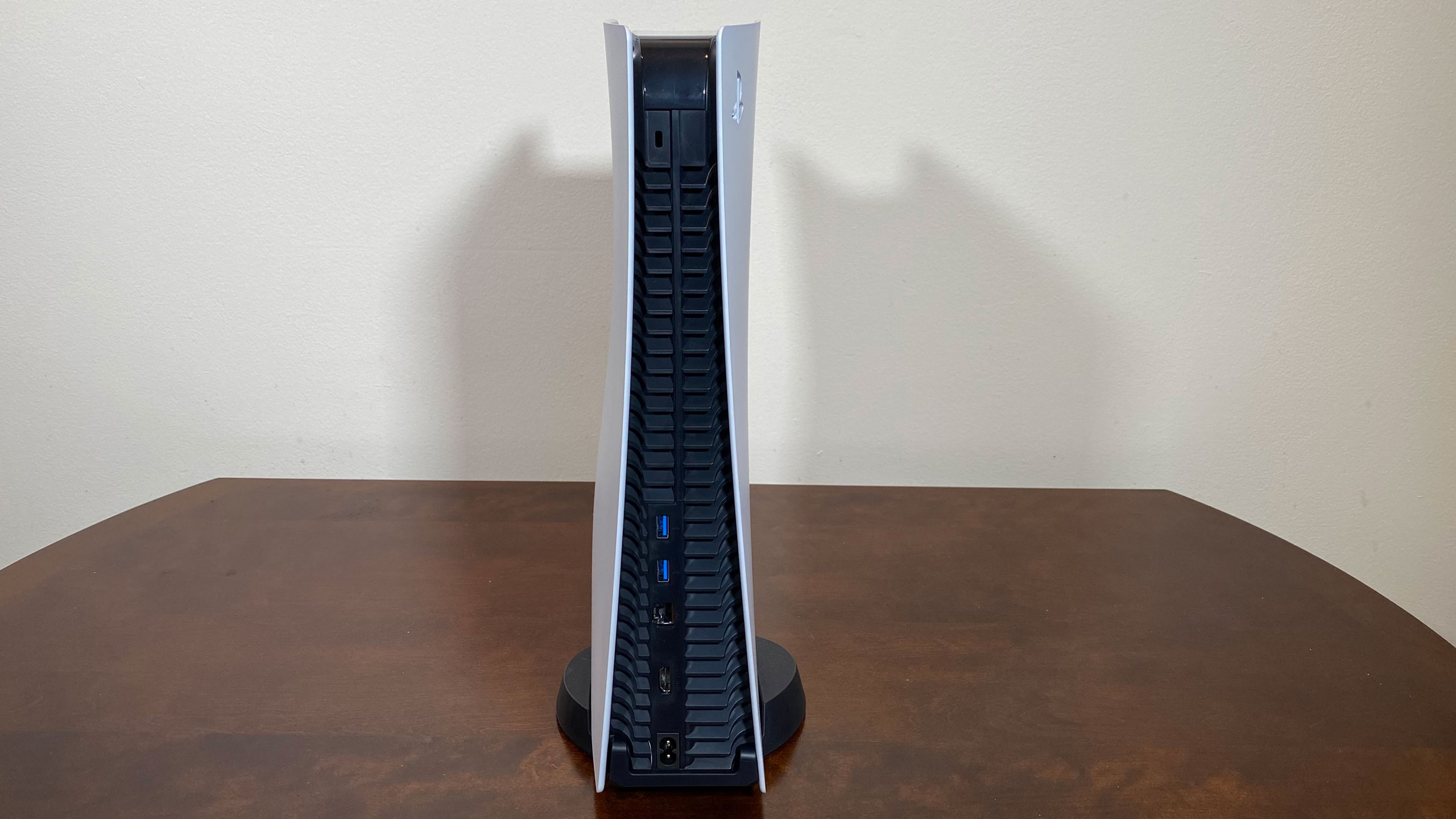



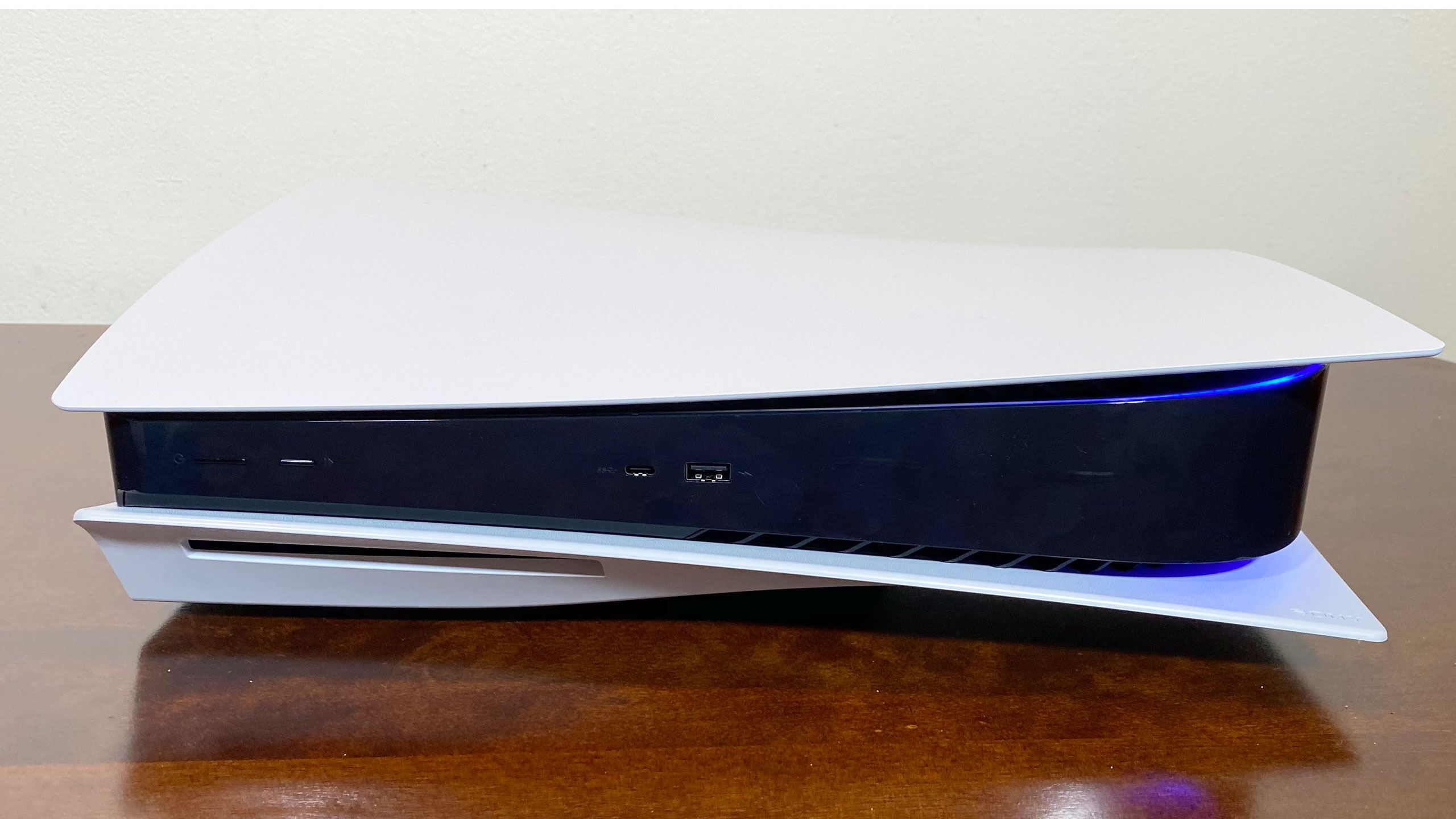
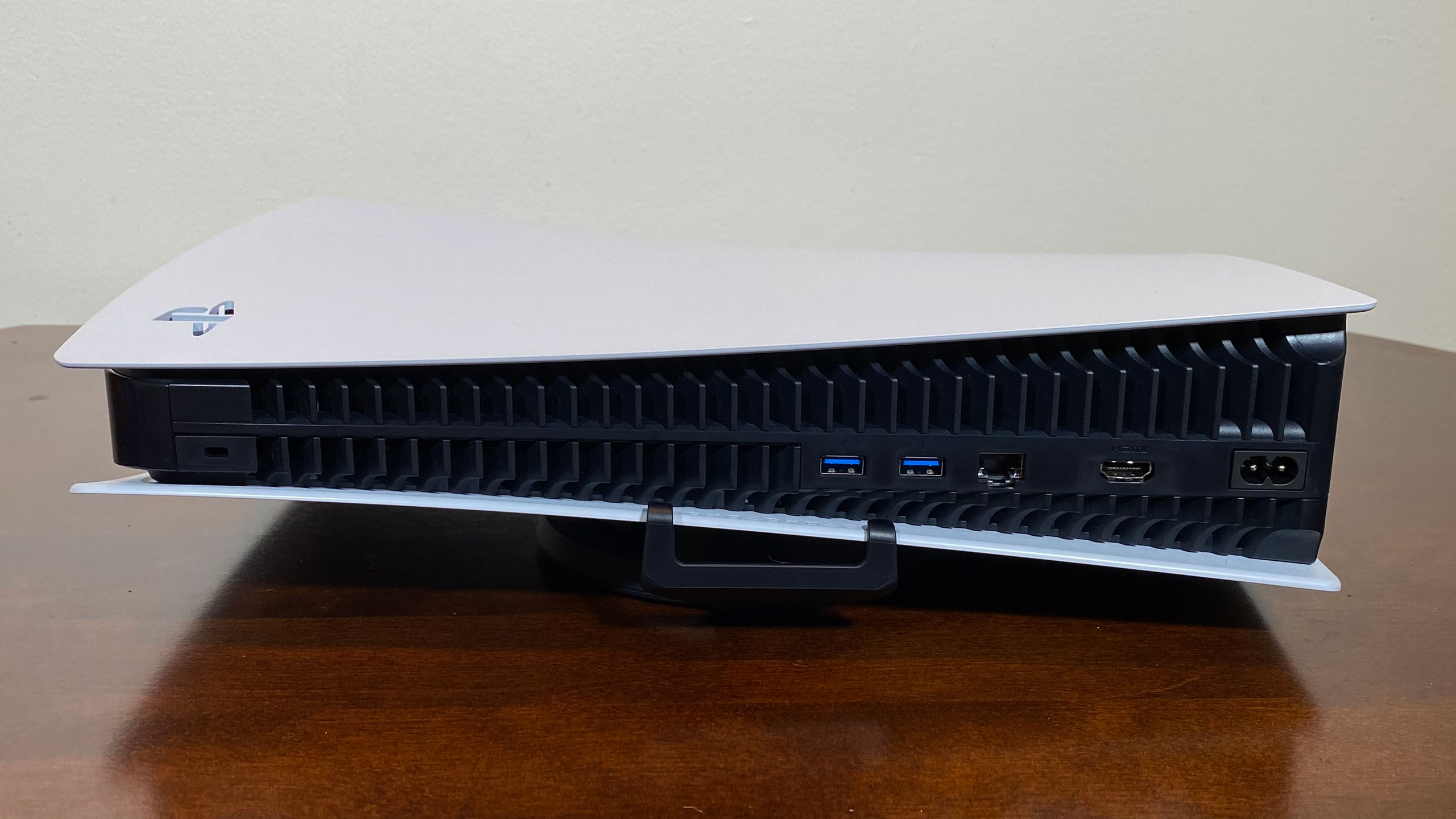
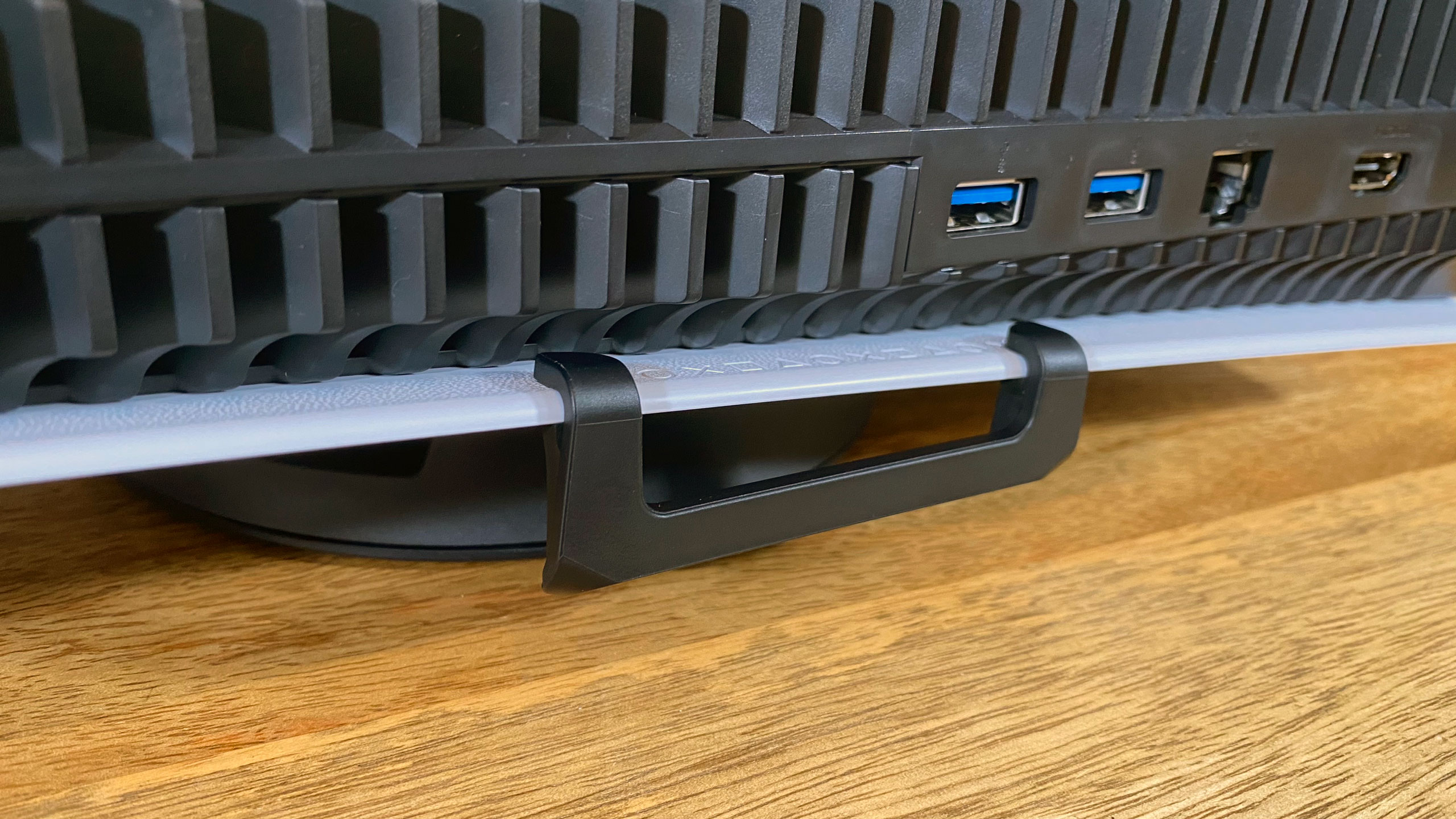
The whole design is sort of like a sandwich. The meat is a black plastic housing for all of the components. It's glossy and picks up lots of fingerprints. It's also where the power and eject button (on the model with a disc drive) are, and PS4 owners will be happy to know they are meaningfully separated and are different sizes.
The bread in this sandwich are two white plastic covers that start flush with the system and ultimately curve upwards like a blooming flower or a popped collar. We're reviewing the version with the disc drive, and it sort of just juts out, which isn't kind to the symmetry at the top. The left side panel has the PlayStation logo cut out, showing the black from the system housing in the middle. Both side panels can be removed for cleaning and some upgrades (see below), and I would not at all be surprised to see an ecosystem of alternate color side panels. When you turn the system on, blue lighting on the edges of the system reflects off the white walls, which is kind of neat. It turns yellow in sleep mode and turns white when the system is running. This seems like a bit of a missed opportunity for full-on PC-style RGB, but instead it's the only thing about the design that's subtle.
The front features just two ports: a USB 3.1 Type-A port and Type-C port. The latter is a nice touch to futureproof the system, especially with more and more USB-C drives and other accessories coming out, and it's something the Xbox Series X doesn't offer. On the back, there are two more USB Type-A ports alongside an Ethernet jack, HDMI 2.1 output, the power jack and a lock slot.
Get Tom's Hardware's best news and in-depth reviews, straight to your inbox.
The PS5 comes with a stand that supports it either vertically or horizontally. Putting it on horizontally is the easy way. There are some PlayStation controller symbols: the square, circle, triangle and cross. You can easily align the clips with the ends of the pattern and press it on. There's no screw holding it on, and while that's convenient, it does have a tendency to slip around when you reach behind it to adjust cables.

Standing the PS5 vertically is more work. First, you have to remove a small circular cap that protects the screw hole, which you can with your fingernail. If you twist the base, you'll find a hidden space holding a screw, with room for you to place the cap. Pop the screw out, and then you can latch the base onto the bottom. You'll need a coin or flathead screwdriver to tighten it, which is ultimately far more secure. Either way, I suspect many people will attach this once and leave it for years, but it's the most difficult setup process of any recent console prior to turning it on.
PlayStation 5 Specifications
| CPU | AMD Zen 2-based CPU, 8 Cores / 16 Threads, up to 3.5 GHz | Row 0 - Cell 2 |
| GPU | AMD RDNA 2-based GPU, 36 CUs up to 2.23 GHz, 10.3 Teraflops | Row 1 - Cell 2 |
| RAM | 16GB GDDR6 | Row 2 - Cell 2 |
| RAM Bandwidth | 448GBps | Row 3 - Cell 2 |
| Storage | 825GB NVMe SSD | Row 4 - Cell 2 |
| Expandable Storage | M.2 PCIe SSD Slot, External HDD or SSD over USB 3.1 | Row 5 - Cell 2 |
| Optical Drive | 4K Blu-ray | Row 6 - Cell 2 |
| Display Out | HDMI 2.1 | Row 7 - Cell 2 |
| Wireless | Wi-Fi 6 (ax), Bluetooth 5.1 | Row 8 - Cell 2 |
| Sound | "Tempest" 3D AudioTech | Row 9 - Cell 2 |
| PSU | 350W (340W on Digital Edition) | Row 10 - Cell 2 |
| Dimensions | 15.4 x 4.1 x 10.2 inches (390 x 104 x 260 mm) | Row 11 - Cell 2 |
| Warranty | One year | Row 12 - Cell 2 |
| Price | $499.99 with disc drive (tested), $399.99 all digital | Row 13 - Cell 2 |
CPU, GPU and SSD in the PlayStation 5
The PS5 is powered by tech from AMD. The 8-core/16-thread processor is based on the 7nm Zen 2 architecture, while the GPU is based on the RDNA 2 graphics architecture with 36 compute units.
Sony hasn't been as forthcoming as Microsoft with information about the chip, but we know that the CPU will clock up to 3.5 GHz, while the GPU goes up to 2.23 GHz, capping out at 10.3 teraflops. On paper, that's slower than the Xbox Series X, which goes up to 3.8 GHz on the CPU and has 52 CUs at 1.825 GHz, or 12 teraflops.
One way that Sony is differentiating itself is by using liquid metal as the thermal interface material (TIM) between the CPU and the heatsink.
These specs should, Sony claims, support 4K, 120 Hz output, though that does require the right kind of monitor, as well as games that can hit those performance numbers on the hardware.
Additionally, Sony is moving to an SSD this generation. The custom storage solution is just 825GB, with a 5.5GBps read bandwidth, which is smaller than what Microsoft offers at 1TB. And remember, that's the capacity without the operating system. Ours was 667.2 GB with everything else, before games.
In the future, you'll be able to add a secondary M.2 SSD or use USB storage (see below) to add more space.
Gaming and Graphics on the PlayStation 5
Our time reviewing the PlayStation 5 was spent largely with two titles: Astro's Playroom, which is preinstalled on the system, and Marvel's Spider-Man: Miles Morales, the pseudo-follow up to the 2018 hit starring the Peter Parker iteration of the character.
Spider-Man: Miles Morales is a particularly interesting test subject in that it has two settings. There’s Fidelity, which uses ray tracing, enhanced lighting and other effects with a 4K base image, all at 30 fps, and Performance, which eschews the effects to play at 60 fps and upscales to 4K from lower resolutions.
Unsurprisingly, Spider-Man: Miles Morales' fidelity mode looked great, with large improvements in reflections serving as the star of the show. But once I swung through Manhattan at 60 fps, there was no going back.
Dirt 5 and Devil May Cry 5: Special Edition are among the games which, in theory, will support 4K120. The PlayStation 5 uses HDMI 2.1, which is, as of this writing, largely on a few TVs and even fewer monitors. So 4K60 was the limit for us, and will likely be so for many people in the immediate future.
It's a very limited sample set, but both Spider-Man: Miles Morales and Astro's Playroom looked great on PlayStation 5. The idea that any game could be running at 60 fps makes the PS5 enticing, and choices like the different visual modes in Miles Morales have typically been limited to PC gaming. It's not allowing as many tweaks, but it does let you make a choice based on your setup and preferences.
The custom SSD feels blazing fast. Launching Astro's Playroom or Spider-Man: Miles Morales was a matter of seconds. The latter has an option for the subway loading screens from the first game, but you have to turn it on, because it goes so fast the game doesn't actually need it.
The other way that the PS5 is becoming more like a PC is with backwards compatibility. While the PS4 had to cut most ties to the PS3 due to architecture differences, the PS5 will play most PS4 games. As of this writing, Sony has a list of just ten PS4 games that won't run on its newest console. PlayStation VR will work, but it requires an adapter and it's not clear what the future of the existing platform looks like.
The PlayStation 5's true power is yet to be unlocked. In just about every console generation, developers find out how to best run their games on consoles, especially as games stop running across generations.
Heat, Power and Noise on the PlayStation 5
Due to the nature of consoles, typical benchmarks are particularly difficult to run. But by measuring the power the PS5 draws, the heat it generates and the noise it makes, we can get a picture of how the console performs.

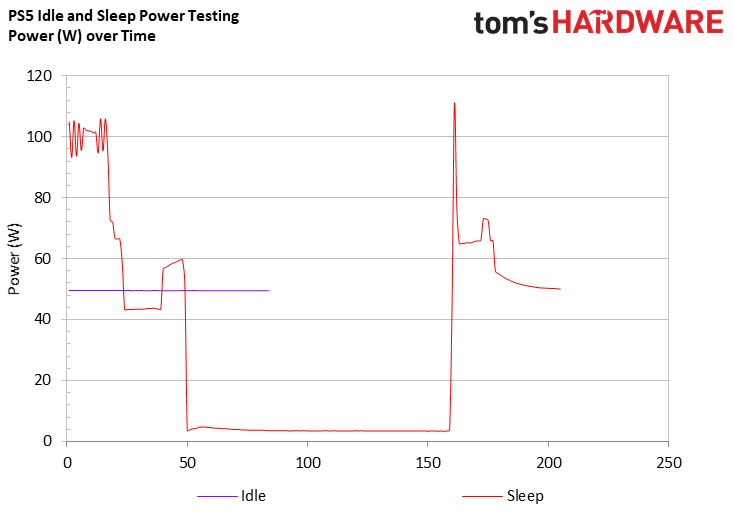
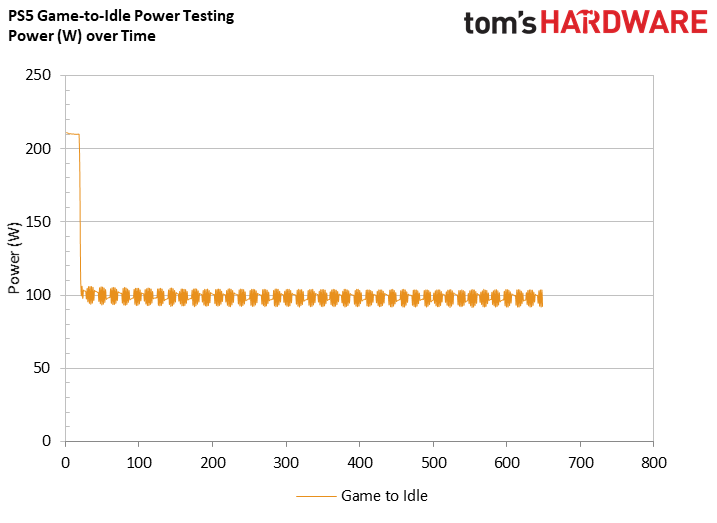

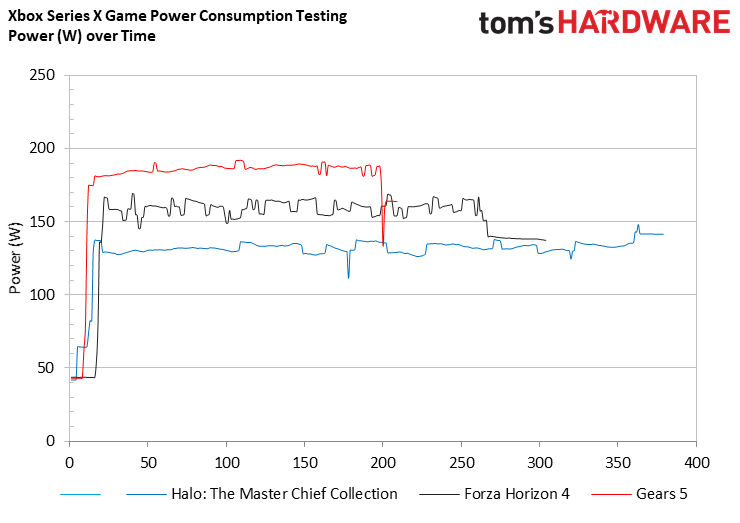
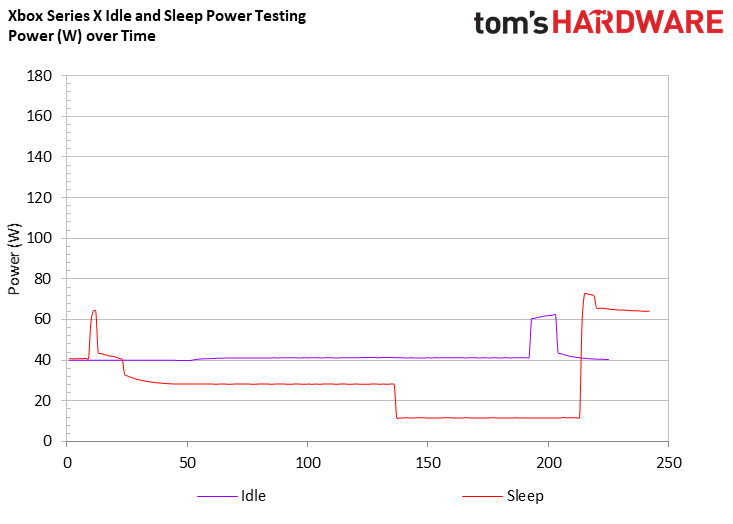
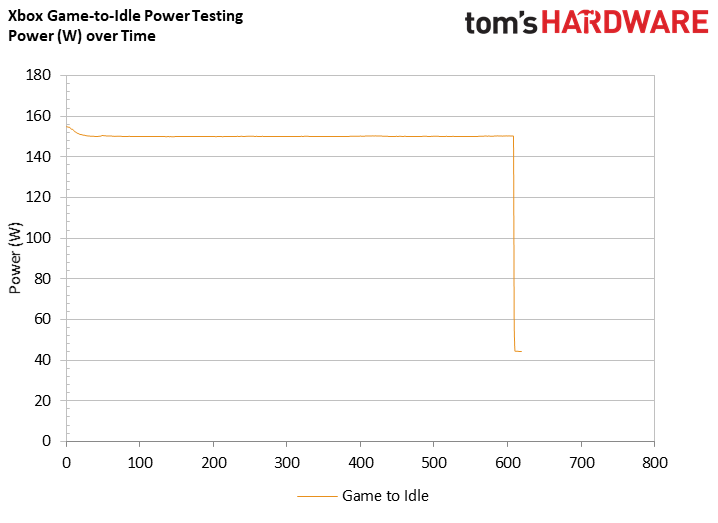
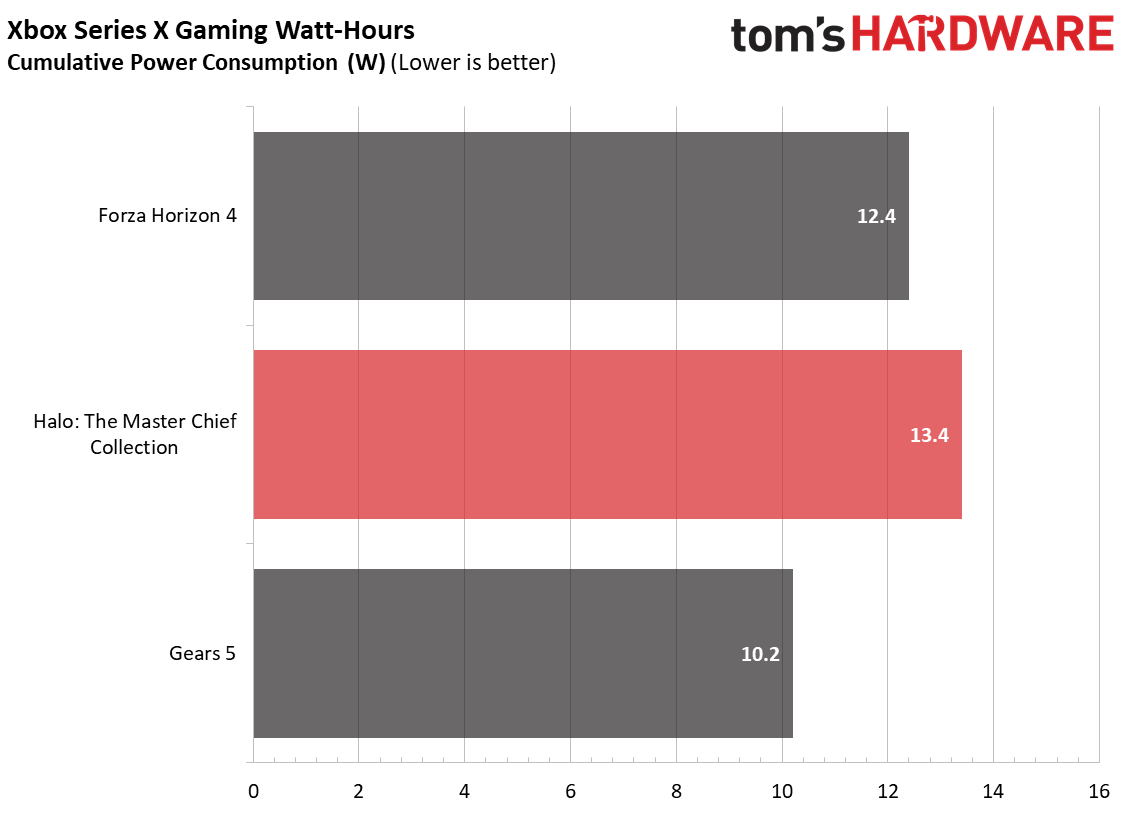
We saw surprisingly consistent numbers in Marvel's Spider-Man: Miles Morales, where the game drew a peak of 225.5 watts in both fidelity mode (4K, ray tracing, 30 fps) and performance mode (4K upscaling, 60 fps). During Astro's Playground, it peaked at 224.2 watts.
Those are higher numbers than we saw on the Xbox Series X, which peaked at 192 watts playing Gears 5. In Forza Horizon 4, the peak was 169.2 watts. We didn't have access to any of the same games while testing the systems, but this suggests, in an apple-to-oranges comparison, that the PlayStation 5 will be the more expensive console to run.
By default settings, the PlayStation 5 enters an idle state from a game far faster than the Xbox Series X, which took almost ten minutes.
When the PS5 is at idle, it typically pulls around 49.6 watts (higher than the Series X at 41.3 watts). When sleeping, the PS5 is using between 3 to 4 watts, which is lower than the Xbox's 11.7 watts.
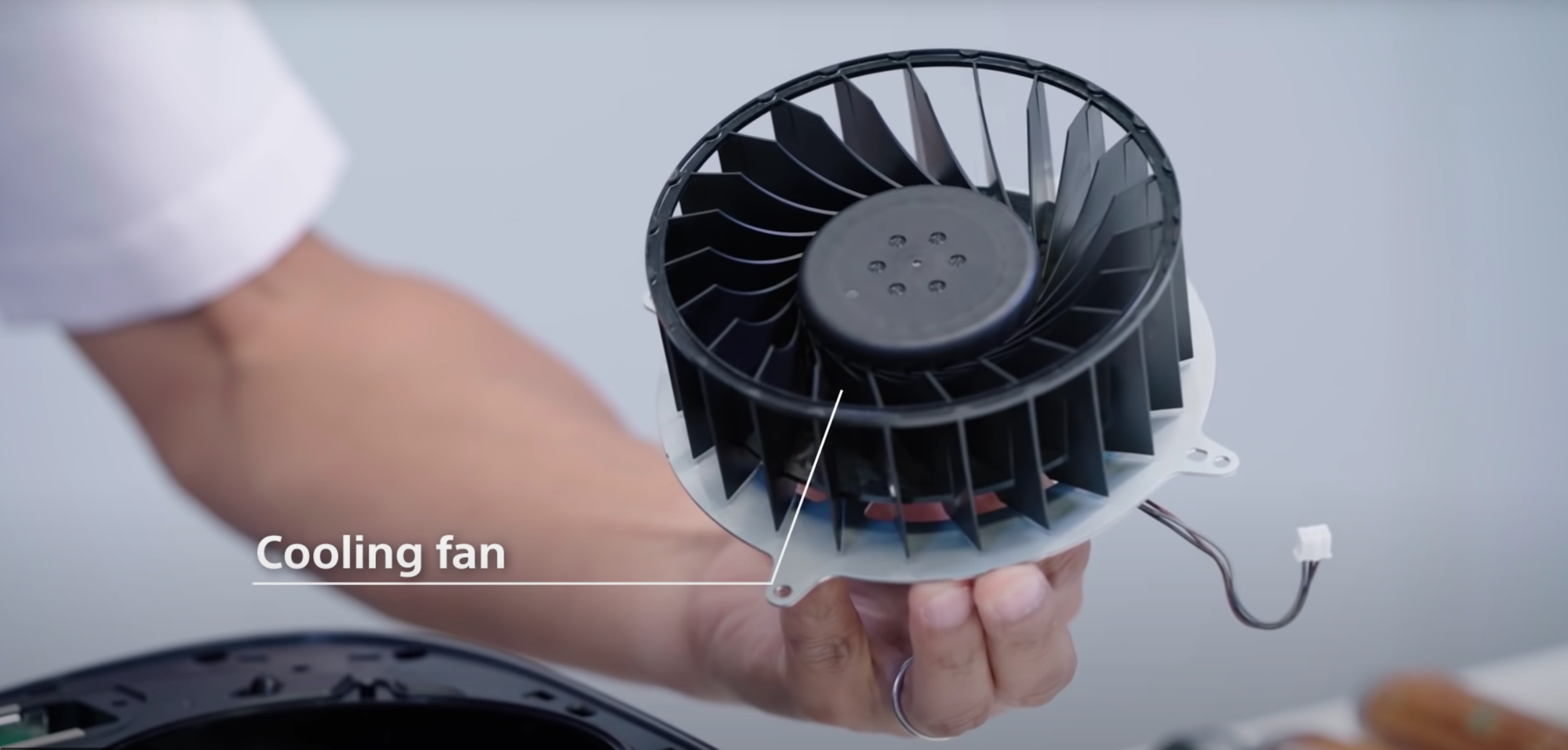
The PlayStation 5's cooling is the biggest contributor to the machine's size. Both the front and back are covered with vents. The two rows on the front are the intakes, with the exhaust covering the entire rear of the system. Behind the two white faceplates, there is a 120mm fan that is 45mm thick and can intake air from both sides.
I noticed the PS5's fan far more than the one on the box Series X. Occasionally, our review unit made an annoying, high-pitched whirring sound, especially when in sleep mode or idle. It tended to go away with time, and rarely, if ever, happened under load. We reported this to Sony, who said it would inform its hardware team. When the PS5 is playing a game, you can hear the fan when nearby, but it's not bad enough to be distracting.
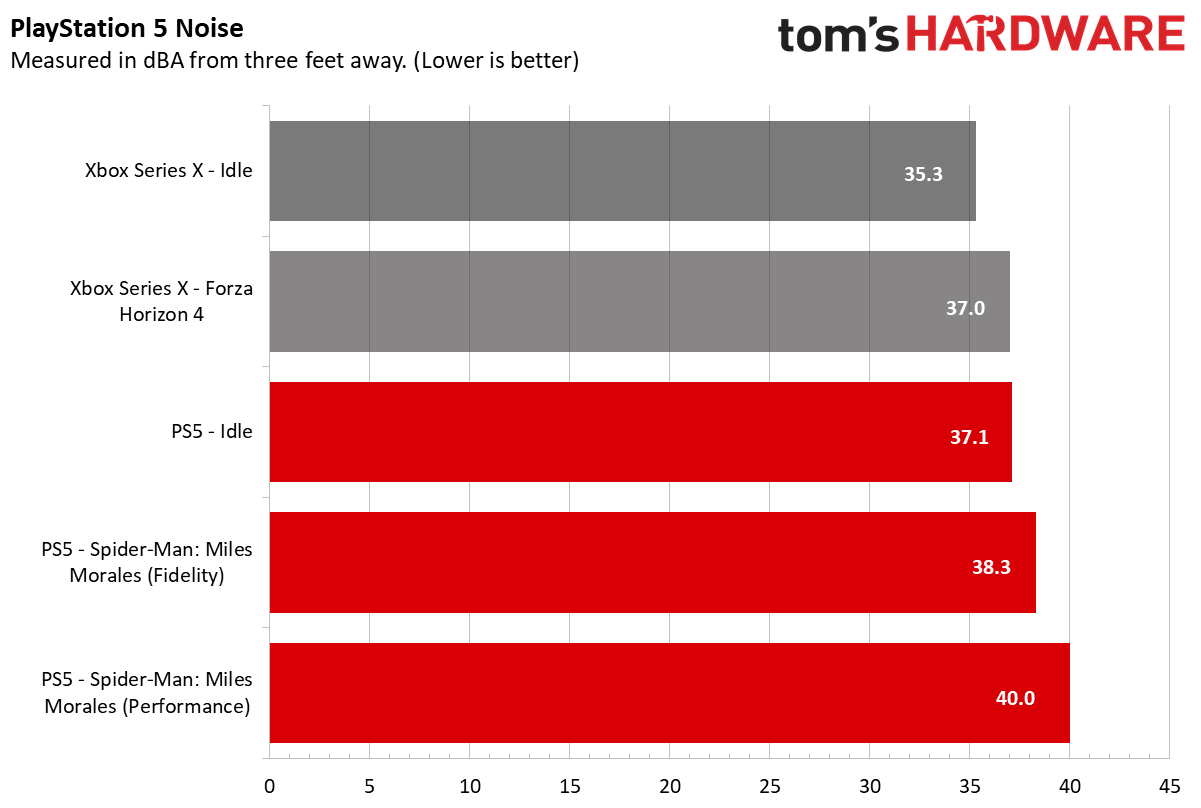
When we tested the sound coming from the PS5, ambient noise was 35.0 dBA (decibels as heard by the human ear. From roughly three feet away from the system, it measured 37.1 dBA at idle, ranged from 37.1 to 38.3 dBA with Spider-Man: Miles Morales in fidelity mode and 37.3 to 40.0 dBA in performance mode. The measurements were made using digital games, not discs, so the disc drive wasn't operating. When I used the disc drive, it made more noticeable noise only when installing the game.
We took images of the PlayStation 5 through a Flir thermal imaging camera. With Spider-Man: Miles Morales running in fidelity mode, the hottest point was 38 degrees Celsius from the front (100.4 degrees Fahrenheit) and 38.8 degrees Celsius from the side (101.8 degrees Fahrenheit). The images clearly show cooler temperatures near the top, where the massive fan is, while heat concentrates at the bottom.
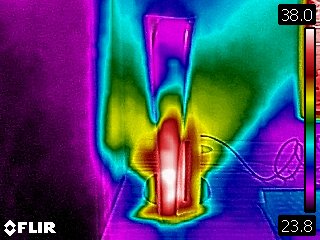
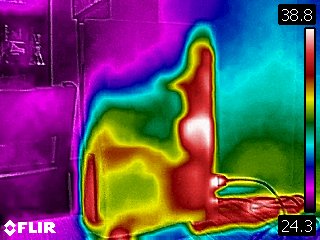
With the game in performance mode, it hit 39.5 degrees Celsius from the front (103.1 degrees Fahrenheit) and 38.4 degrees Celsius from the side (101.1 degrees Fahrenheit).
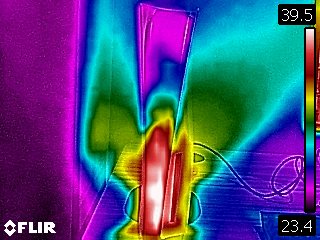
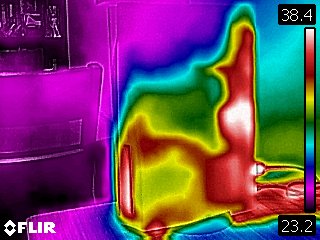
Reports have suggested that Sony may end up optimizing the cooling solution on a per-game basis. If and when this comes, it could mean improvements for noise, performance and thermals.
Beneath the side panels, there are dust catchers on both sides of the system. In a teardown video, Sony said users can "vacuum" dust from the system. This differs from the Xbox Series X, which doesn't have a user accessible way to clear dust.
Upgrading Storage on the PlayStation 5
You can upgrade the storage on a PS5 much like you can on a PC. Underneath the right side panel, there's a slot for an M.2 SSD that supports the latest PCIe 4.0 standard. You can remove the side panel by taking off the stand, laying the system on its side, pulling on the back corner and sliding it off. There's a small door held in by a single Phillips head screw that you'll have to remove, but then you're in.
This will become a must for some gamers, as the 825GB SSD is actually a lot smaller when you include the OS and other preinstalled software. Ours started at just 667.2 GB.
But here's the rub: At launch, the PlayStation 5 is not enabled to use the secondary drive just yet. A Sony representative told Tom's Hardware that this will be enabled in a future software update, but did not provide firm timing. There is also currently no list of which drives have been tested to work best or which specs one should aim for.
You can also play games off USB drives, but that only includes PS4 games with backwards compatibility.
DualSense Controller
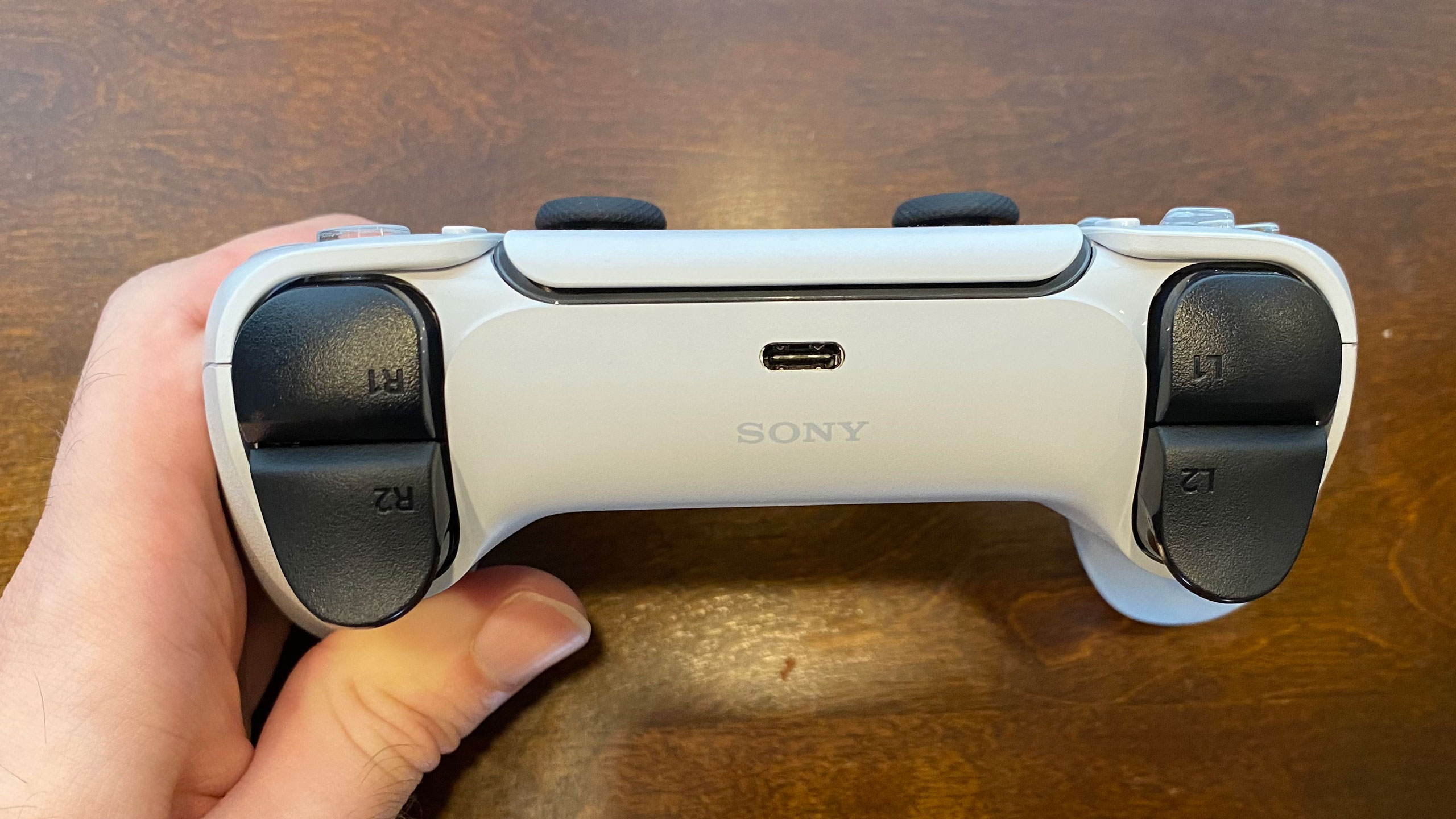
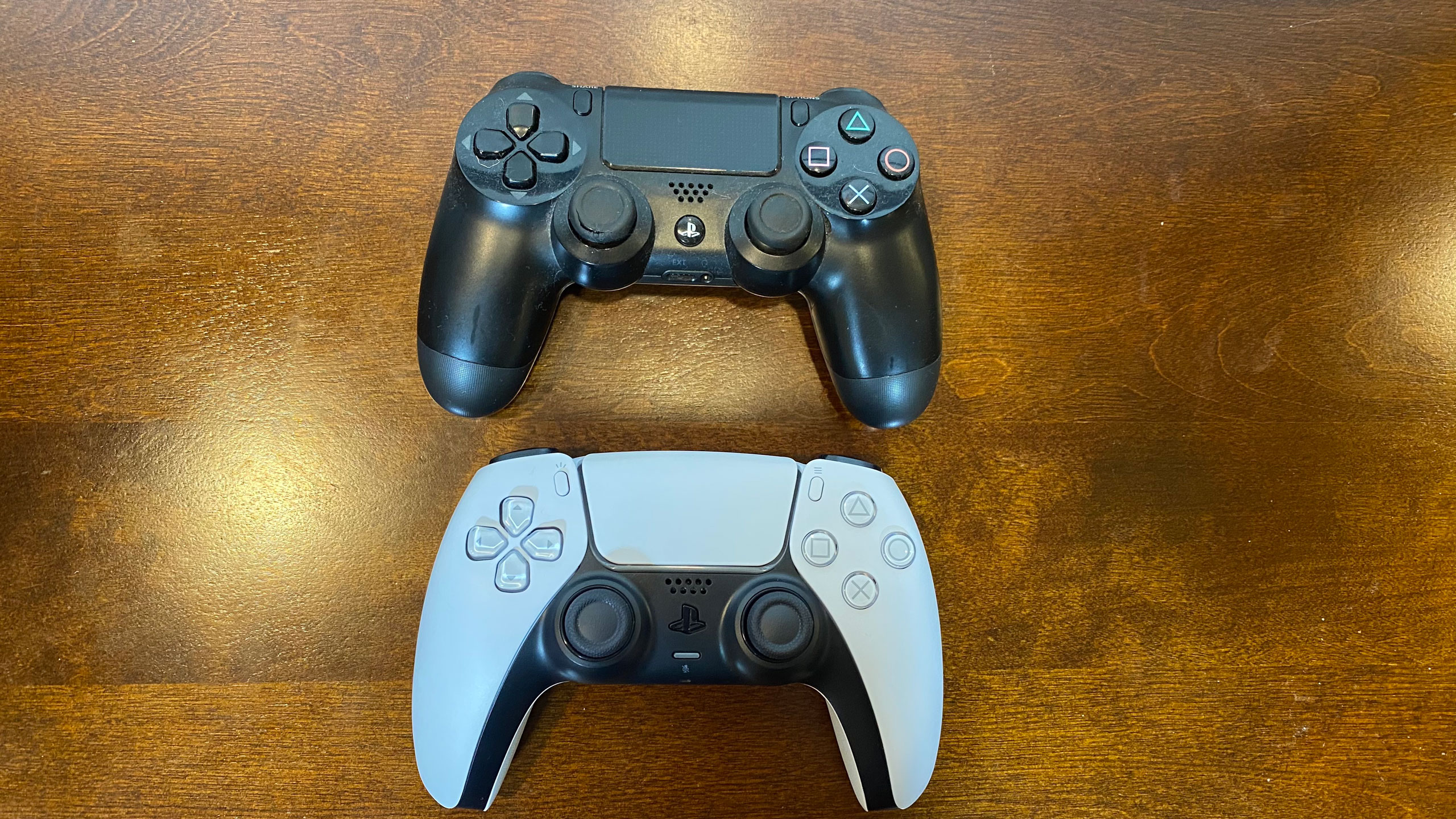
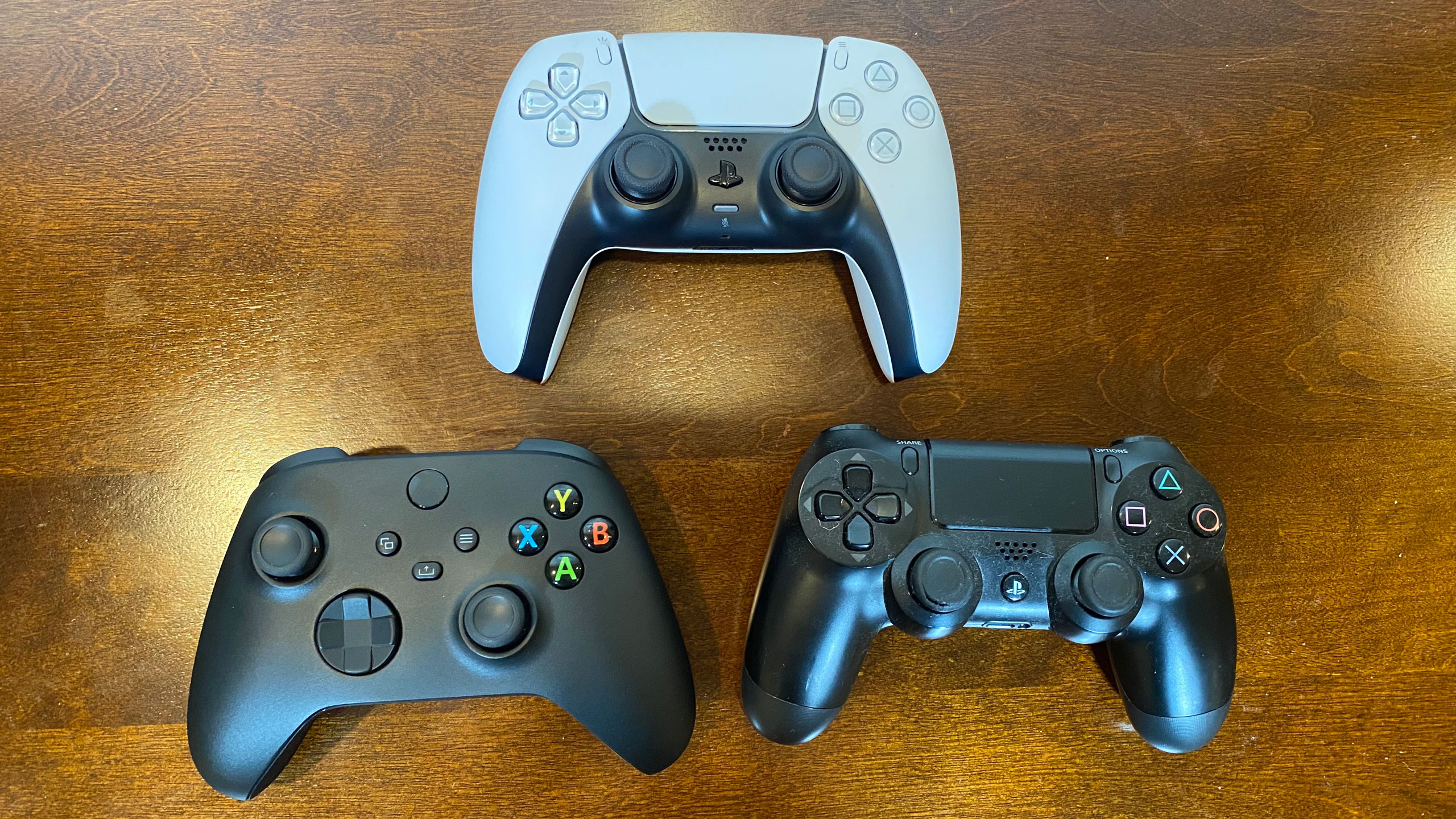
Goodbye, DualShock. Rumble isn't the only game in town. Sony's new controller has the same basic shape as its previous controller, the DualShock 4, but feels more premium, has a new design, and brings several features that have the potential to change the way we experience games. At its best, this controller feels more "next-gen" than even the PS5's graphical improvements.
DualSense has a two-toned design. It's primarily black, though the area with the control sticks, PlayStation button, the bumpers and triggers are black. It gives off a bit of a tuxedo look. Even the famous PlayStation buttons use gray-on-white buttons rather than their usual colors. The light bar has been moved from the top to around the touchpad, and the controller now charges over USB Type-C.
At 280 grams, though, the matte plastic controller is noticeably heavier than the DualShock 4. This may be due in part to the larger, 1,560mAh lithium-ion rechargeable battery.
The controller is packed with features. You still maintain the touchpad, which supports two points and clicking, share button, light bar, speaker, and microphone pass through. But rumble has been completely changed, with haptic feedback provided by two separate actuators. It's a more extreme version of the Nintendo Switch's HD rumble, and can make more minute effects. In Astro's Playroom, it made a plunk as the main character dove into the water, while in Marvel's Spider-Man: Miles Morales, it sends a vibrating pulse when you use venom (not to be confused with the character) electrical attacks.
There's also an adaptive trigger system that changes how much pressure you need to press it down. This is used to great effect in Spider-Man as you swing through the city, feeling like you're actually letting webs loose from mechanical shooters. It's also used prominently in Astro's Playroom, as you get in a frog suit and jump with a spring. I could see this being used in plenty of narrative scenarios, like guns jamming.
A microphone built into the PS5 lets you do things like blow into the controller to move objects. This should also allow you to chat without headphones. You can also mute the controller with a dedicated button.
The touchpad still largely feels like a gimmick, but all of the other stuff is at least somewhat exciting. I do worry that these features won't be supported by third party developers, who also make games for Xbox, PC, Nintendo Switch and streaming services. The DualShock 4's light bar, touchpad and speaker were only meaningfully used in a handful of titles that Sony's own studios didn't make, so we'll see how much work developers put in.
The PlayStation button is no longer in a circle. It's a small, oddly-shaped button, and I found myself jonesing for the bigger version on the DualShock 4, though I'm sure I'll get used to it in time.
Anecdotally, I'm finding the DualSense to last longer than the DualShock 4, but only slightly so, and I expect to top it off fairly often.
You can also connect a PS5 controller to a PC to play games on your computer.
User Interface on the PlayStation 5
Anyone who used the PlayStation 4 will get up to speed on the PS5 quickly, but there are some new features, especially in-game, despite the initially familiar layout.
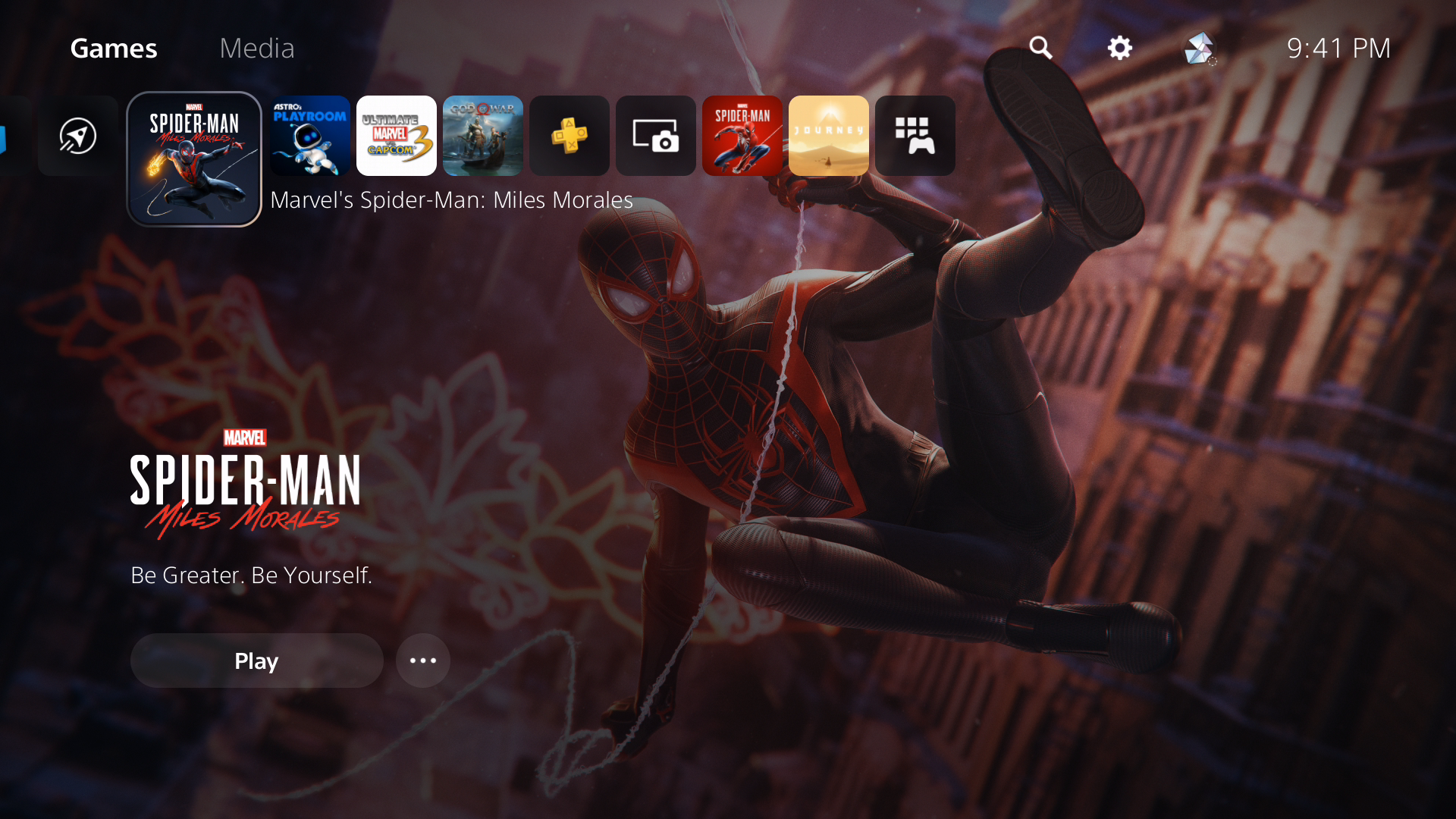

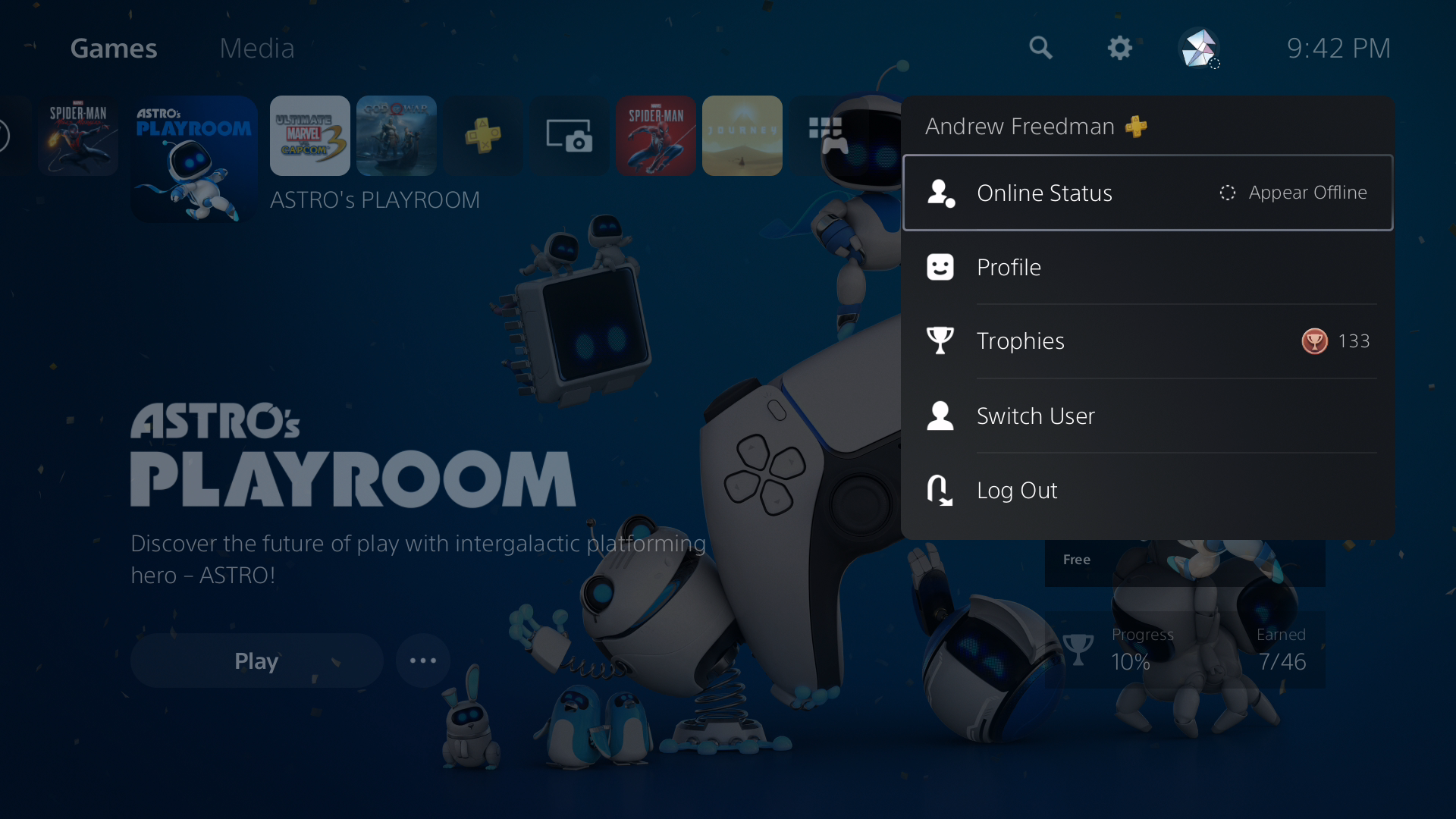

The home screen starts with a list of your games and applications, largely listed in order of their last use (the exceptions are the PlayStation Store and the experimental Explore tab, with info about the PlayStation 5 and its games). Games and Media have been separated, however, and you can switch between them with the bumpers on your controller or by highlighting and selecting them. The top corner features a search function, settings, and quick access to your profile, including online status and trophies.
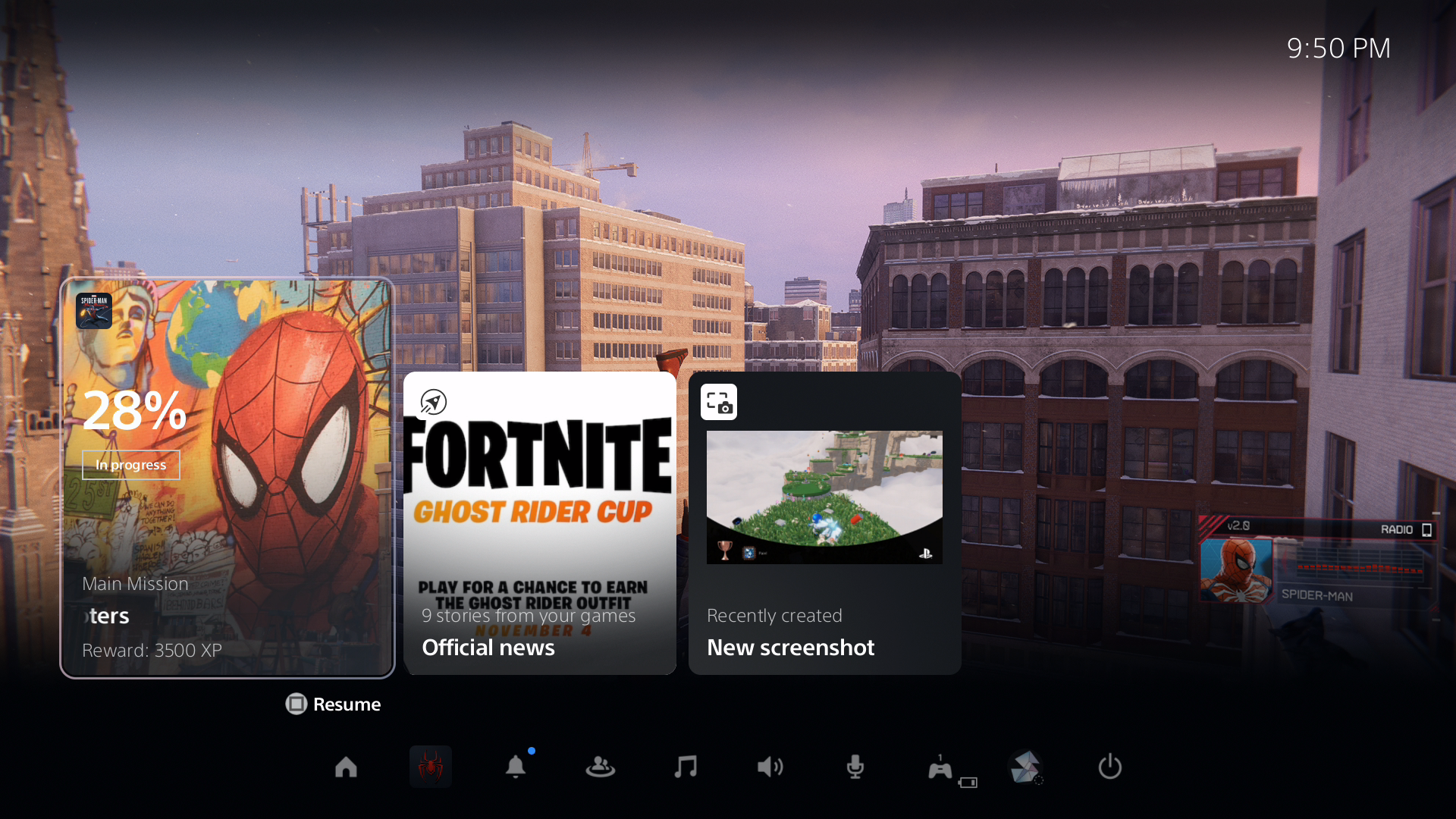
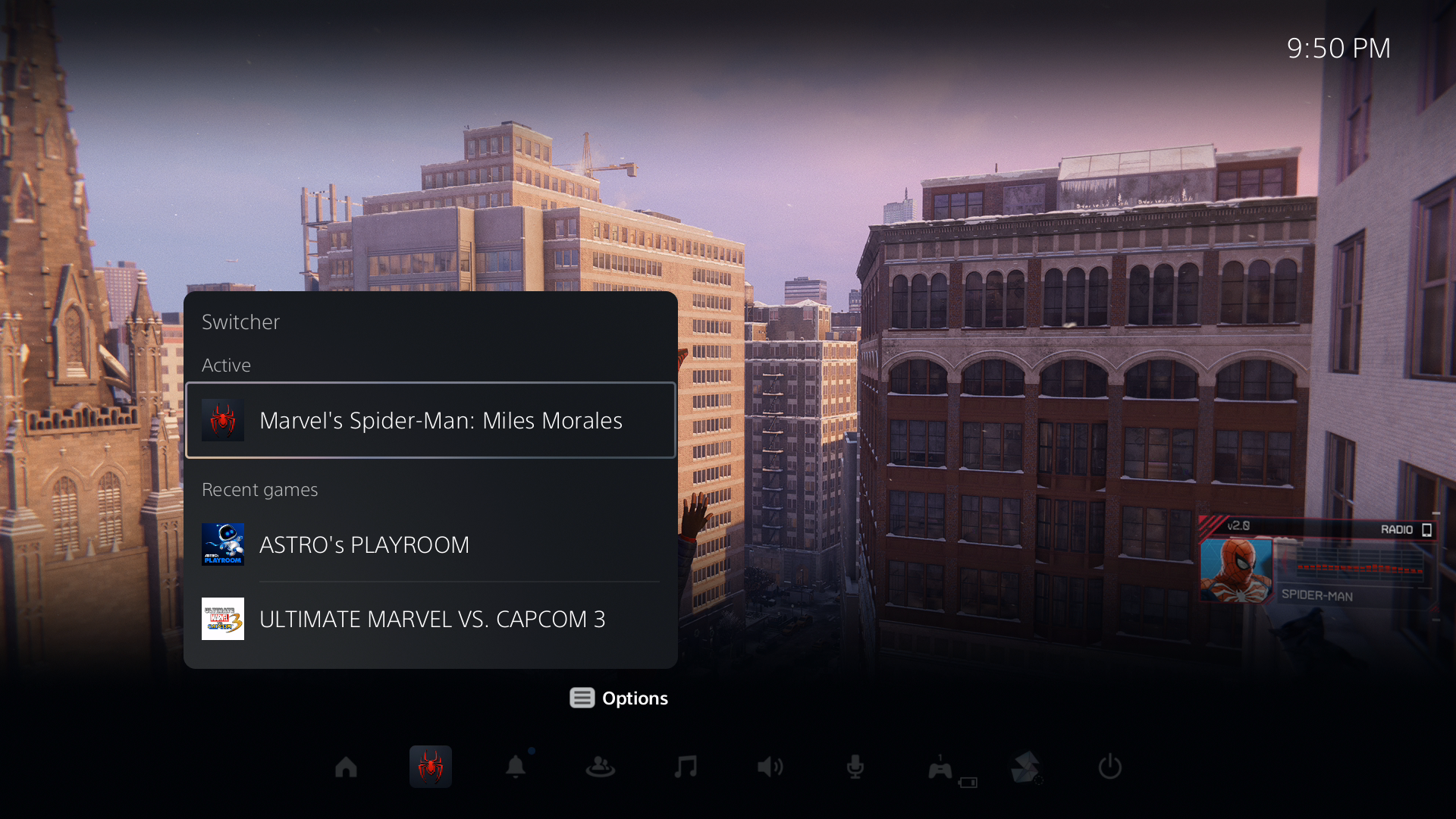
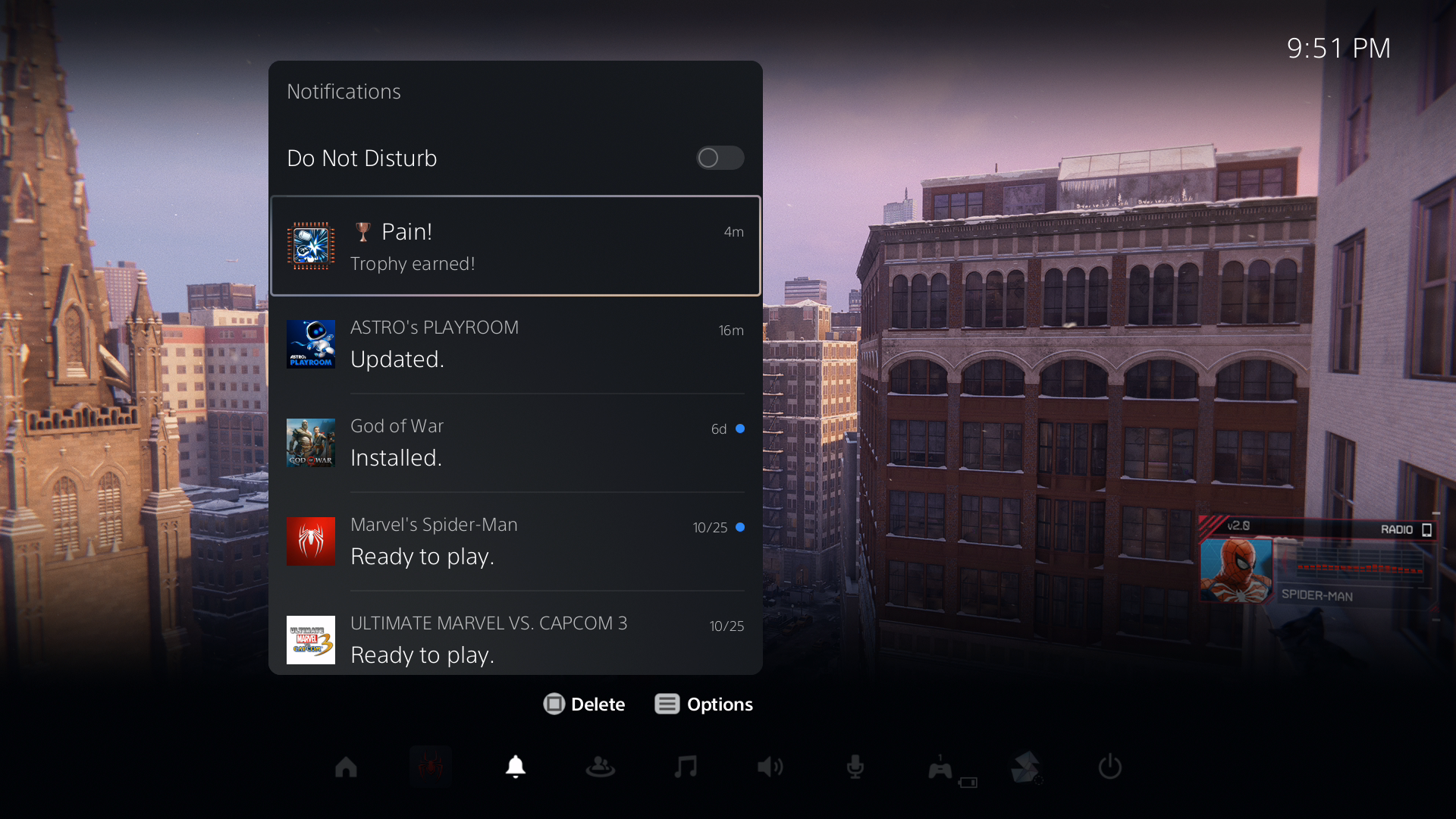
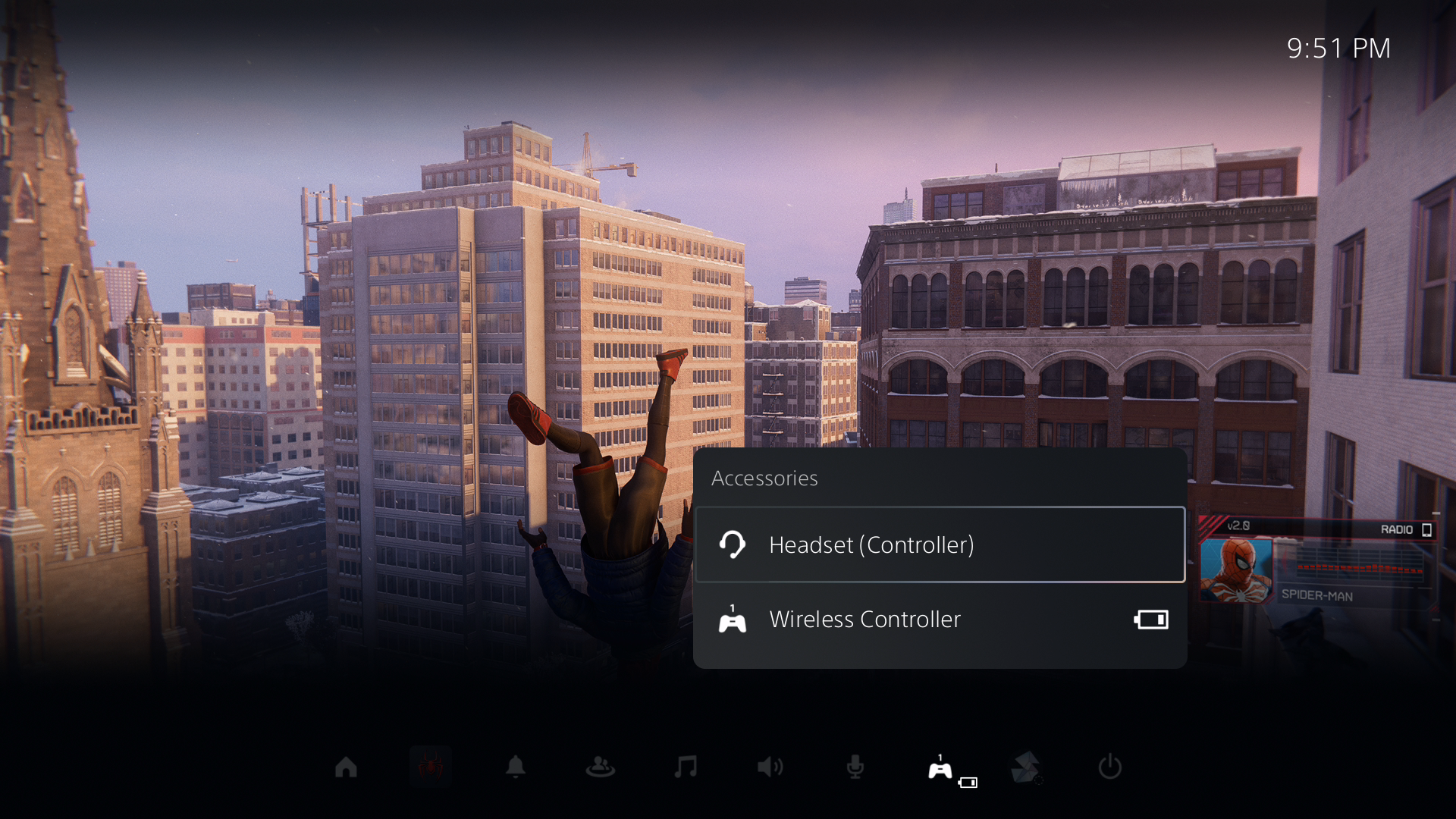
There's a new element, similar to the Guide on Xbox, that is available when you press the PS button. It brings up a menu that can take you home, switch between games, see notifications, check a "game base" to join parties with friends, control music, adjust the microphone and volume, see the status of linked accessories and turn off the system.
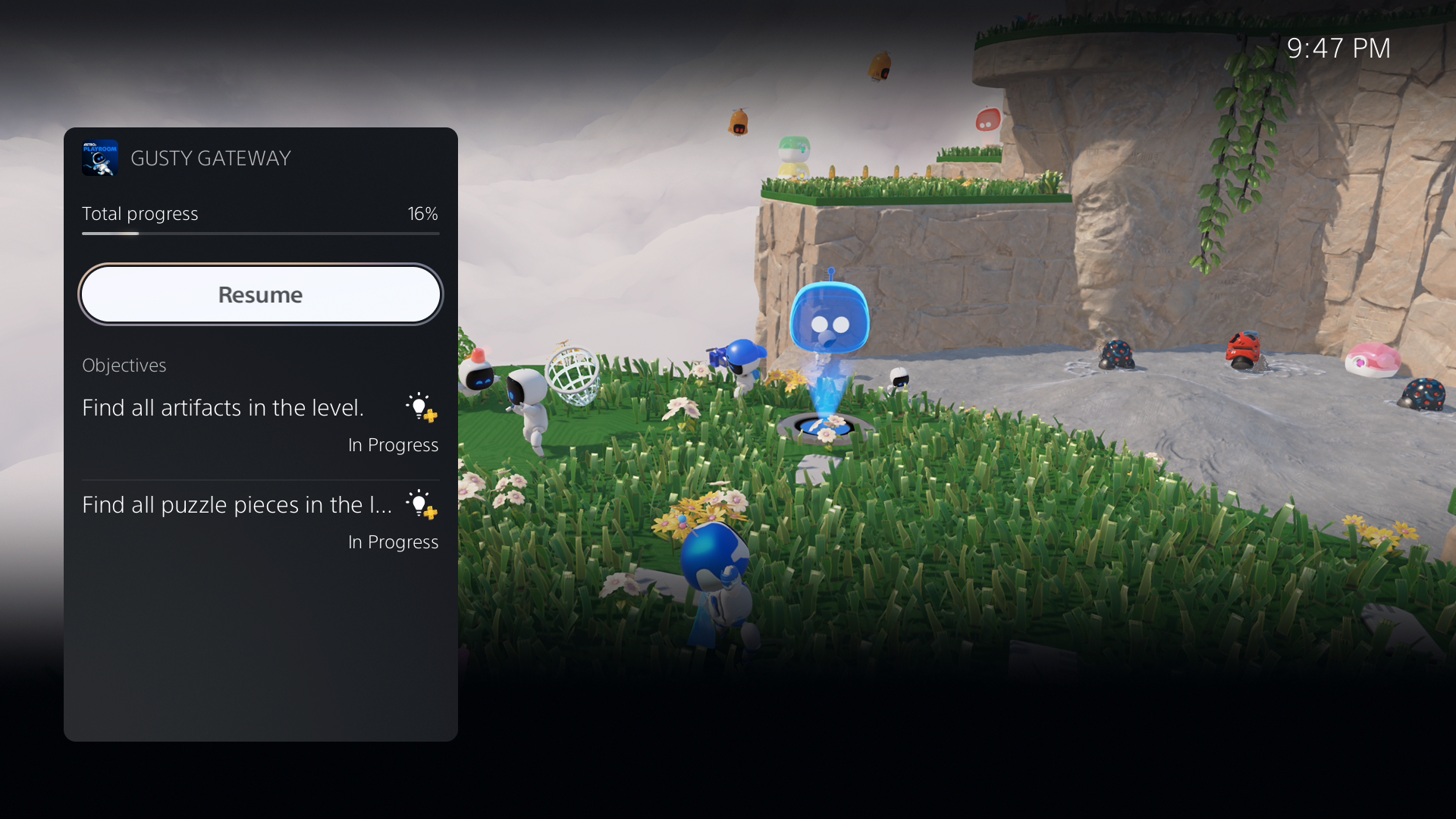
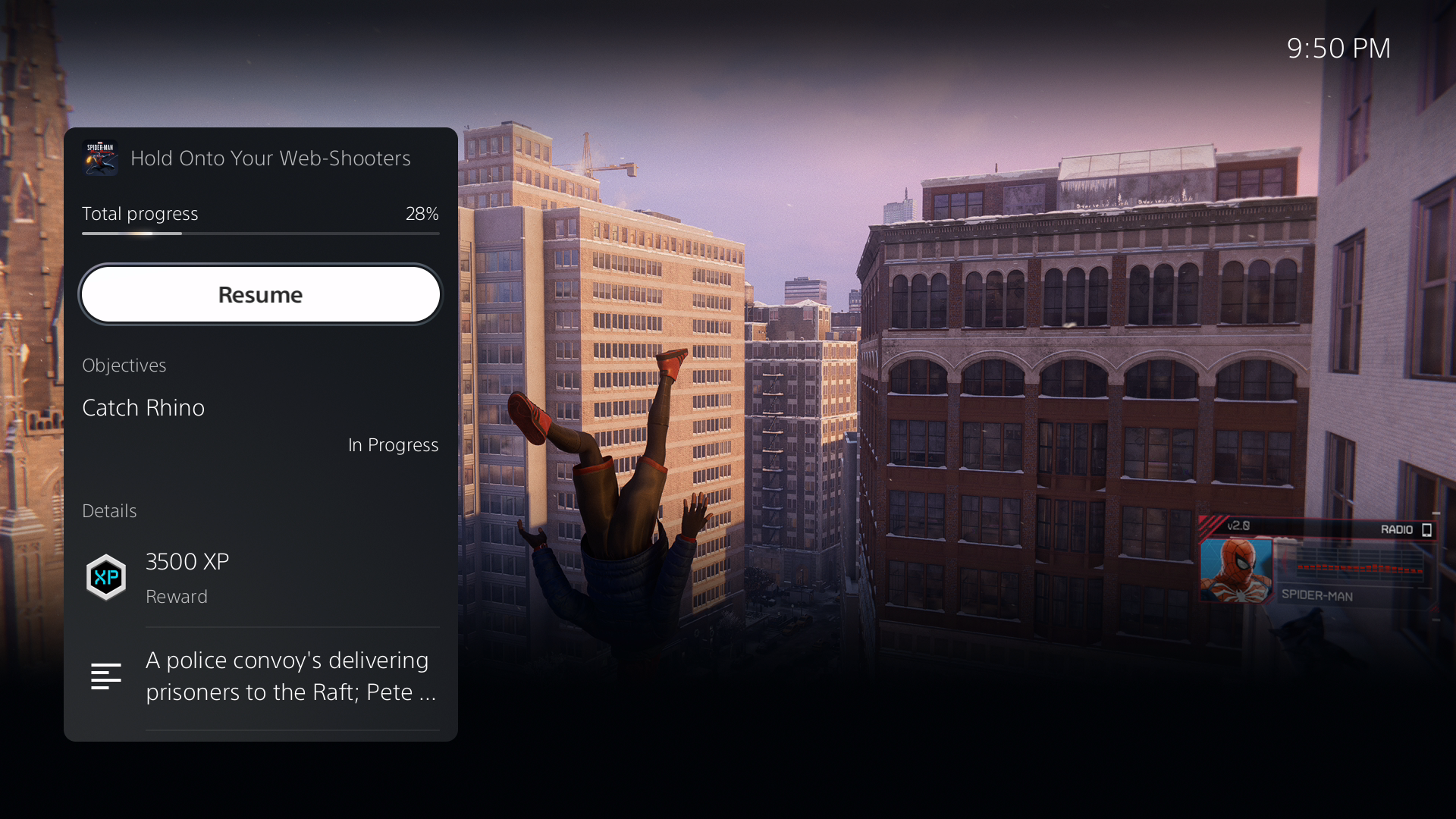
But it also pulls up a series of cards. These show news from the games you play or follow, as well as recently created video clips (and there will be a lot of these, since the PS5 takes a short video every time you earn a trophy). When you're in game, it may tell you about how much progress you've made towards the current goal or mission, along with what in-game rewards may be involved (for Spider-Man: Miles Morales, for instance, you get a summary and learn how much experience you get). For some games, like Astro's Playground, it also includes videos of how to get past certain parts of the game or find artifacts or other items. (This requires a PlayStation Plus subscription.) But if you're someone who goes to YouTube or elsewhere for hints, this feature lets you keep everything in one place.

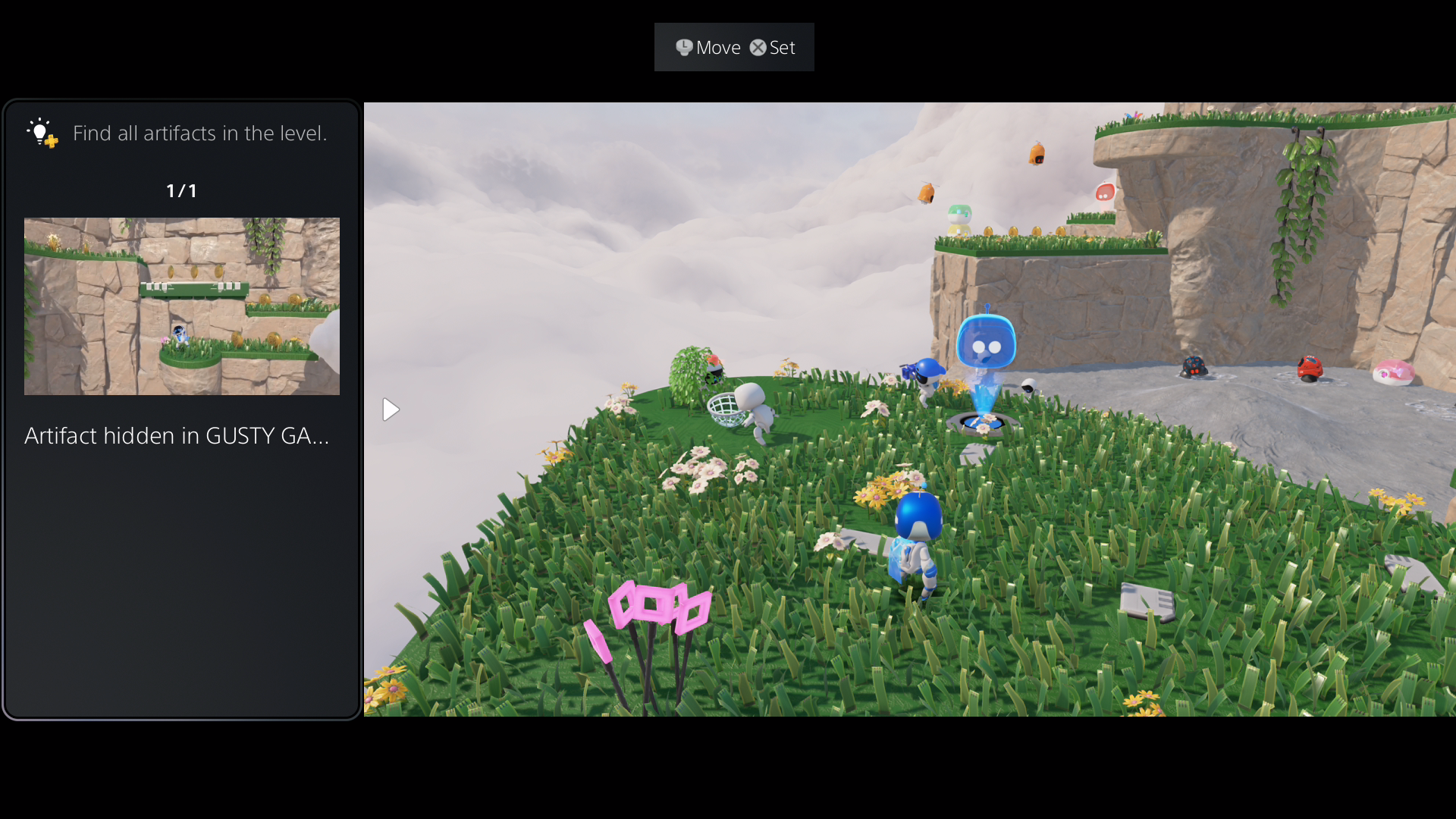
Videos can be run overlaid onto the game, or snapped to the side, which introduces some black bars above and below the game.
The big question I have is how many third party developers will utilize the cards to their fullest potential, but it's a neat idea that's deeply integrated with the system.

More than ever, the PlayStation Store is baked into the UI. It's actually a part of the Games section of the home screen. It brings up a menu, and moving into it moves the rest of that home screen away to delve deeper into the store. Besides trending games and games coming soon, there are collections based on themes, like superheroes, as well as a dedicated section for subscriptions like PlayStation Plus and PS Now.
Social Media and Sharing on the PlayStation 5
Sharing on the PS5 works much like it did on the PS4. Hitting the button lets you take screenshots or video on the screen, which are held in the Media Gallery for editing or sharing.
Unlike the Xbox Series X, the PS5 does allow for some capturing of the menus, but we used an Elgato 4K60 Pro to grab those shots.
Still images can be sent to your friends, parties, or sent out to Twitter, while videos can also be uploaded to YouTube.
You can also pick resolutions for videos, which format you want your screenshots in (I suggest switching from WebM to JPG), and it's pretty easy to copy to a USB stick. But I wouldn't mind seeing more integrations to more easily share.
Entertainment on the PlayStation 5
Besides serving as a game machine, the PS5 also has full suite of media apps. These have been separated from the gaming-focused applications in the main menu, but you can easily get to them by pressing RB on the controller.
That brings you to a screen of all available apps, which currently includes Disney Plus, Netflix, Hulu, Amazon Prime Video, Apple TV Plus, Peacock, Crunchyroll, Funimation, ESPN, VUDU, YouTube, WWE and Plex, to name a few. Additionally, Twitch is listed among the entertainment apps for game streaming, while Spotify is the big music offering. Finally, there's a dedicated application for any movies or TV shows you purchase digitally through the PlayStation Store.
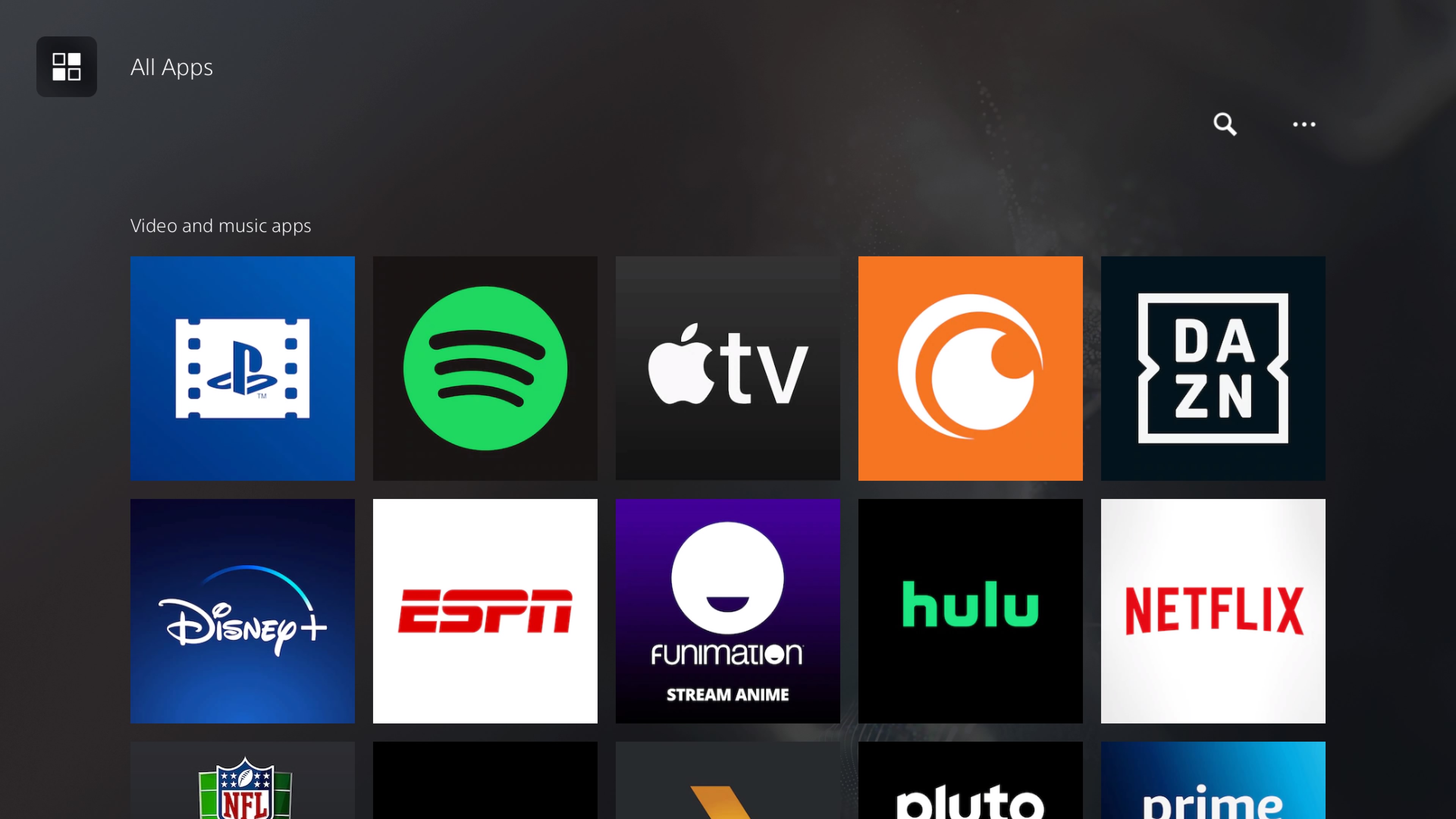

It's a solid set that I think will cover most people's bases, though Microsoft has more options on the Xbox Series X, including CBS All Access, Showtime and Major League Baseball, and, most notably, HBO Max which some people may miss. The Xbox also has Prime Music, Pandora and Deezer for music.
A separate "TV and Video" tab on the PS5 has recommendations across many services, even if you haven't downloaded them. But you can see trending or suggested titles from Disney Plus, Netflix, Prime Video, Peacock, Tubi and more if you so choose.
PlayStation 5 Game Library
One big advantage the PlayStation 5 has at the start of this generation is that there are some exclusives on day one. Astro's Playroom is preinstalled, and Demon's Souls, Sackboy: A Big Adventure and Marvel's Spider-Man: Miles Morales are all available. Destruction All Stars, which was going to be a launch title, was delayed to February.
Spider-Man: Miles Morales is an excellent followup to the first game, shedding everything that didn't work, doubling down on what did, and with better writing. It looks incredible, and while the plot is somewhat predictable, the changes to the game that make Miles his own Spider-Man, including invisibility and "venom" bio-electricity separate it from the original.
Astro's Playroom, which is included with the console, is a love letter to PlayStation history and an excellent, adorable introduction to the DualSense controller.
A number of third party games that are console exclusive to the PS5 include Godfall and Bugsnax, as well as third party titles releasing on multiple platforms like Assassin's Creed Valhalla, NBA 2K21 and Fortnite. There are also third-part titles in the future, like Cyberpunk 2077 and Call of Duty: Black Ops Cold War coming soon.
The PlayStation 5 supports backwards compatibility with PS4 games, both digital and on disc, including those with PlayStation VR. Sony has listed just ten games with compatibility issues.
Additionally, Sony has added the PlayStation Plus Collection to its PlayStation Plus subscription program, which will allow PS5 owners to digitally download and play popular PS4 games, including God of War, The Last of Us: Remastered, Fallout 4, Battlefield 1, Uncharted 4: A Thief's End, The Last Guardian, Resident Evil: Biohazard and more.
PlayStation Plus and PlayStation Now
Here's another way to play games on PS5: PlayStation Plus. The $59.99 annual service (though you can often find it for cheaper) is mandatory for online multiplayer. It also gets you a selection of new games each month. On the PS5, the first of these games will be developer Young Horses' Bugsnax. PlayStation Plus also gives you 100GB of cloud storage for saves.
Sony offers a separate streaming service, PlayStation Now, to stream or download certain PS2, PS3 and PS4 games to your console or a Windows 10 PC. This subscription also has offerings up to $59.99 per year.
I would like to see Sony make a sort of "PlayStation Plus Ultimate," similar to Xbox's Game Pass Ultimate, to combine the two.
PlayStation 5 and PC
We know many of our readers may have a console as a complement to their gaming PC. In the case of a PlayStation 5, it works due primarily to an upcoming library of exclusives. Simply put, those who want to play Spider-Man: Miles Morales, Horizon Forbidden West, the next God of War or more franchises exclusive to PlayStation will only be able to play them here, at least for a bit.
During the PS4's lifetime, Horizon Zero Dawn and Death Stranding eventually made their way to PC, and Sony has suggested it may continue to experiment with that. But it also means waiting, potentially years.
In this way, the PS5 is very different from its biggest rival, the Xbox Series X, which is in some ways a complement to the PC rather than a separate experience. The one exception is PS Now, which does let you stream some older PlayStation games on PC.
Sony's pricing on the PS5 is very aggressive, topping out at $499.99, far below high-end GPUs on their own. For many, for possibly a few years, the PlayStation 5 will be a better overall gaming value, especially for those who don't want to do a ton of tinkering.
Bottom Line
The PlayStation 5 isn't just an evolution over last gen. It's an outright statement that with more power and better technology, the strategy that worked for the last few years will be even better now.
Many of the games that will define the early months of the PlayStation 5, like Spider-Man: Miles Morales, Sackboy: A Big Adventure and even Horizon: Forbidden West (the latter of which is set to be released in 2021) will also come to the PlayStation 4. Meaning you can still enjoy upcoming PlayStation Studios titles on your current console system. But the exclusives also are part of a strong launch library for those who want the latest and greatest.
If it's not the SSD and new GPU that make games feel like next-gen, it's the DualSense controller, which literally feels next gen. I can't wait to see where developers take the technology, but I'm also a bit worried that not many will use it.
On paper, the Xbox Series X is the stronger system, with faster, more powerful specs. It will take time to see if the PlayStation 5 falters, but first impressions suggest that it is plenty powerful in its own right.
The PlayStation 5 may not be the prettiest or the quietest, but it's modernized, it's powerful, and it's fast as hell. It will need some time to meet its full potential, but with a mix of exciting first- and third-party games and tantalizing tech, the PS5 has an exciting future ahead of it.

Andrew E. Freedman is a senior editor at Tom's Hardware focusing on laptops, desktops and gaming. He also keeps up with the latest news. A lover of all things gaming and tech, his previous work has shown up in Tom's Guide, Laptop Mag, Kotaku, PCMag and Complex, among others. Follow him on Threads @FreedmanAE and BlueSky @andrewfreedman.net. You can send him tips on Signal: andrewfreedman.01
-
Giroro Meh, I'm going to wait for game prices to come down.Reply
$70+ is way too much to buy into free-to-pay and pay-to-win style monetization.
I feel bad for all the kids who won't be able to afford to play games this generation, because the big publishers are too busy aggressively exploiting whales and addicts. -
nofanneeded I dont like the non symmetrical look of PS5 .. but I agree that it has the exclusive games that makes me want to buy it over Xbox .Reply
Also , keep in mind that Sony is the only console with VR hardware and VR games. and the new VR hardware is coming . -
simonstroud I'm not so sure that the small horsepower advantage the Xbox X has over the PS5 will ever show itself. When you look at the huge amount of spec that has been slashed on the Xbox S (which uses binned Xbox X CPU with cores, pipelines disabled an the max clock cut back significantly, and 2gb less RAM), Xbox titles will always be held back by the lesser system.Reply
There is a lot to be said for Sony making both models of PS5 the same core spec, a single hardware target for developing to means highly optimised games, cheaper launch costs, less testing overhead.
Sony have already won this gen. The have the best console, at the best price point, the best game lineup and a huge user base of PS4 owners. Let's face reality, you are going to struggle to find unhappy PS4 owners this gen, they will be upgrading to PS5. En-masse.
PS4 to PS5 conversion rates are going to be as near to 100%
Xbox to PS5 conversions are goibg to be significant, given all the exclusives owners missed out on. -
mac_angel Just started reading the article, so I haven't read much, just the comment about the size, and got me thinking. Considering it is very much using PC parts in these now, it makes sense for them to be bigger, especially when you consider the cooling. More cooling power means more power options. - bigger heat sinks, bigger fans, etc.Reply
But, it also got me thinking about another idea that I'm surprised no one has considered (or maybe they did and didn't think it plausible). Consoles have always been built as stand alone pieces. And a generally small footprint, which has had people complain about heating and cooling. But these are generally hooked up to TVs and entertainment systems. And surround sound in these games have been around for a long time as well. So why not design these to match more of an audio component (A/V Receiver, Blu-Ray player, etc). It would be much easier to match the design with the standard footprint of stereo component. You wouldn't have the issue of some people liking the odd design that some designers came up with, and others hating it. Most people would prefer to have something match the esthetics of their other components than have this big, odd, white, retro spaceship idea sitting off to the side. And it would give them a TONNE more space for components and cooling. They could even incorporate a slot at the bottom front to store the controllers and have them charging when not being used. -
saltyGoat11 Reply
Next gen games won't get cheaper my friend. So either don't wait or just game on a PC where games are much more affordable (usually). The $70 is the new pricing for AAA games from this point on, it'll go to the PC marketplace very soon unfortunately, but the PC market is way wider and with more purchasing options than any console, and Epic I hope still going to give free games once a week into 2021 (my Epic games collection is getting bigger and bigger)Giroro said:Meh, I'm going to wait for game prices to come down.
$70+ is way too much to buy into free-to-pay and pay-to-win style monetization.
I feel bad for all the kids who won't be able to afford to play games this generation, because the big publishers are too busy aggressively exploiting whales and addicts. -
hitman400 Why are all the PS5 reviews coming out at the same time? Are you guys rushing this review? I ask because there was zero (0) coverage of how 4k movies play, upscaling, etc.Reply -
Kahless01 wasnt there still an embargo on pictures of the menus ??? thats what ive seen from other reviews.Reply